Calcium in aquaponic systems
Calcium is one of the most important plant nutrients—in fact, there are some who argue that it should be one of the primary plant nutrients along with nitrogen, phosphorus, and potassium. That said, it is one of the secondary macronutrients, along with magnesium and sulfur.
A common nutrient in aquaponics
Calcium occurs in aquaponic systems as Ca²+ (an ionic form) and interacts in an interesting way with potassium and magnesium, which you may remember from those articles. So what does calcium do?
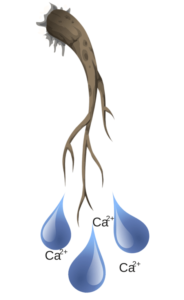
Calcium is critical in the plant growth cycle. It is important for regulating osmotic pressure (keeping the plant cells full of water), and for holding cell walls together. Think of it as the element that glues the cell walls together and keeps them structurally sound.
Calcium is a common nutrient in aquaponic systems and is not usually deficient as a result of pH levels (although if you run very low pH, it can impact availability) as is the case with some of the other plant nutrients.
Most water is fairly hard (which means it contains lots of minerals, including calcium and magnesium carbonates), so calcium enters the system in the form of calcium carbonates every time the grower tops off the water.
In healthy systems, these carbonates are quickly consumed, leaving the calcium for plant uptake. In unhealthy systems or systems where water is extremely hard (carbonates in excess of 250 ppm is a good indicator), these carbonates may not actually be consumed. Learn more about carbonates here.
Calcium uptake is passive
Calcium is an interesting nutrient because while it’s very important, plant uptake is very passive. Basically, plants take up calcium as they take up water. While plants actively take up other nutrients, calcium uptake is limited by the concentration of calcium in the solution and by how much water the plant takes up.
This is important to understand because calcium deficiencies in some crops have nothing to do with concentrations, pH, or any of the common deficiency culprits. What does cause calcium deficiency?
What causes a calcium deficiency?
The cause of a calcium deficiency can simply be that there is just not enough calcium in the water. Sometimes, however, we will see signs of a calcium deficiency when there is too much magnesium or potassium in the water.
In addition, calcium deficiencies occur because your crops are not well ventilated and humidity is too high. This means that the plants are not transpiring (losing water through their leaves) very much. If the plants aren’t losing much water, they’re also not drawing much water.
If calcium is taken up when water is taken up, this means that the plant is not getting enough calcium. The easiest way to deal with this scenario is to increase your ventilation or to decrease humidity.
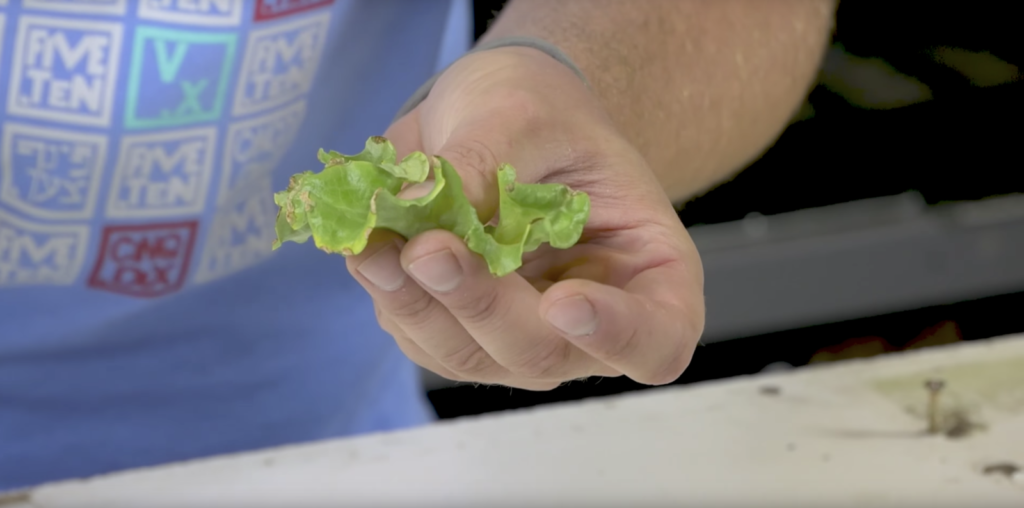
Signs of calcium deficiency
It’s important to know what you’re looking for; calcium deficiencies, in some instances, can imitate potassium and magnesium deficiencies. The foremost difference is black, dead areas of young plant tissue, a symptom known as necrosis. This is also called tip burn when it occurs along tips of the young leaves.
(Because calcium can imitate other deficiencies, use a key to diagnose!)
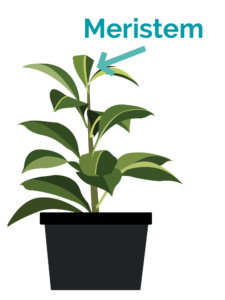 Usually, necrosis and deformation of the leaves are apparent at the meristem—the developing areas—at the top of the plant. The young tissues die first because calcium plays a major role in dividing cells and building cell walls. Once calcium is used, it tends not to move or be reused. Calcium is a relatively immobile element, making it difficult for plants to transport it.
Usually, necrosis and deformation of the leaves are apparent at the meristem—the developing areas—at the top of the plant. The young tissues die first because calcium plays a major role in dividing cells and building cell walls. Once calcium is used, it tends not to move or be reused. Calcium is a relatively immobile element, making it difficult for plants to transport it.
If calcium is not present to aid in this regard, new cell walls do not develop, and the young leaves cannot continue growing.
In fruiting crops like tomatoes, calcium deficiencies can be identified by something called blossom and rot. This is when necrotic spots appear on the end of the fruit that the blossom was on.
Treating calcium deficiencies
If you’re certain that you’re seeing a calcium deficiency, you have a few treatment options.
One way is to actually supplement the system. This includes using hydrated (or agricultural) lime, which will supplement both calcium and magnesium in addition to raising pH levels (mostly for low pH systems). Other system supplementation options are chelated calcium, and calcium carbonate (very low pH systems).
The second way is to foliarly apply calcium chloride (CaCl₂).
The best treatment option (in our opinion)
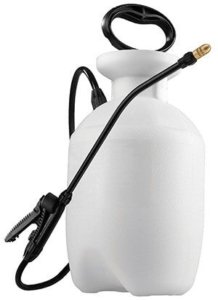 Calcium chloride foliar applications are the best way to supplement calcium and see results quickly. The standard for tomatoes is to mix 4 tablespoons per gallon of water. However, I typically recommend that people start with 4 teaspoons per gallon and if you don’t see results, slowly increase the dosage.
Calcium chloride foliar applications are the best way to supplement calcium and see results quickly. The standard for tomatoes is to mix 4 tablespoons per gallon of water. However, I typically recommend that people start with 4 teaspoons per gallon and if you don’t see results, slowly increase the dosage.
Caution: salt alert
The same caution applies to calcium chloride as it does to potassium chloride—you are applying a salt, so dose carefully in very low volumes. It is best to apply it early in the morning or preferably at dusk.
Remember, when doing foliar applications, it is always better to apply low concentrations more frequently than to apply higher concentrations with less frequency.
Caution is always recommended!
Other treatment options
For other supplementation methods, dose based on your system pH. In our system, we use a lot of hydrated lime as well as potassium hydroxide to raise pH. This naturally supplements calcium as the pH is moderated.
If your system has a neutral to high pH, then chelated calcium can be a great way to get calcium to your plant roots. The amount you add will entirely depend on your particular system.
If you have the means to test calcium in your aquaponic systems, you should be shooting for at least 40–70 ppm calcium (with other nutrient levels at recommended levels—see other blog posts).
If you don’t have the means to test calcium, regular calcium dosing at low levels (e.g. to control pH within a certain range) is unlikely to hurt your system. Your system will tolerate relatively high levels of calcium, but high levels (120–150 ppm + in aquaponic systems) can begin to interfere with the uptake of other nutrients.
Note: this is only for aquaponic systems. Hydroponic systems can tolerate higher concentrations of calcium since the solutions are typically better balanced in regards to the other plant nutrients.
In conclusion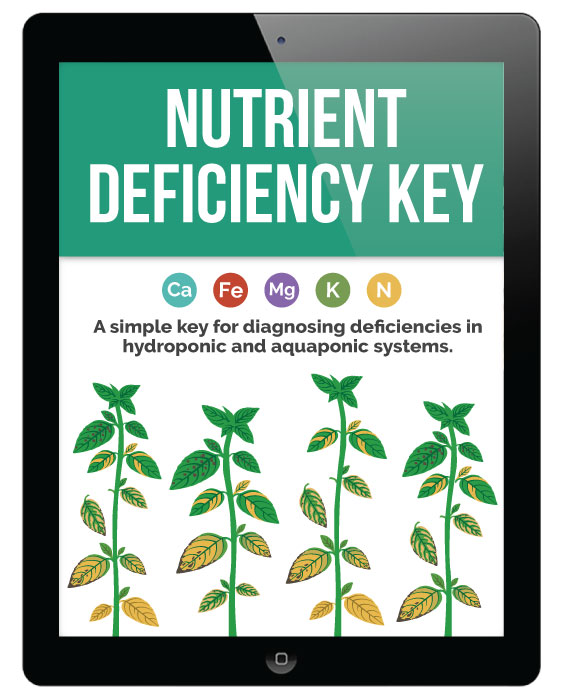
Calcium is essential to plant structure and development, so if your plants are not getting enough of it, they will cease to grow, and established, younger growth will develop necrosis and begin to die off.
If you see signs of a calcium deficiency, double check your Nutrient Deficiency Key and confirm that supplementing calcium is the correct course of action. Download the guide here.
Download the Nutrient Deficiency Key

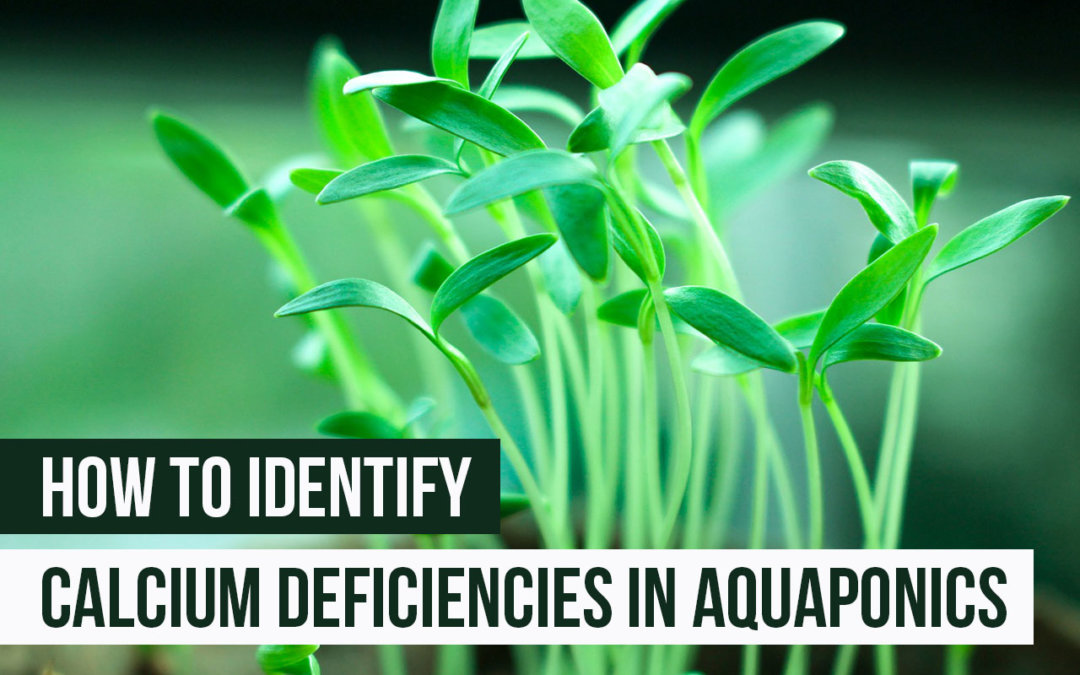
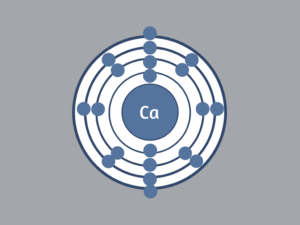

I cant seem to find a calcium chelate in the US that is not EDTA. Actually, the only calcium chelate that I can find is by Miller but it is the EDTA. Is there another available option?
When you say “you should be shooting for at least 40–70 ppm calcium”, do you mean CaCO3 or Ca2+? or are those the same thing in this context because there is one Ca in CaCO3? If my Calcium Hardness is 90ppm, is my Ca2+ also considered 90ppm if my system can effectively remove the CO3; for example? If I maintain CaCO3 within your recommended parameter (40-70 ppm) and my pH is also maintained at 7, should there be enough Ca2+ for the plants to take up? Also, would magnesium be similar to this if maintained at the correct K+, Ca2+ and Mg2+ ratios.
Thanks